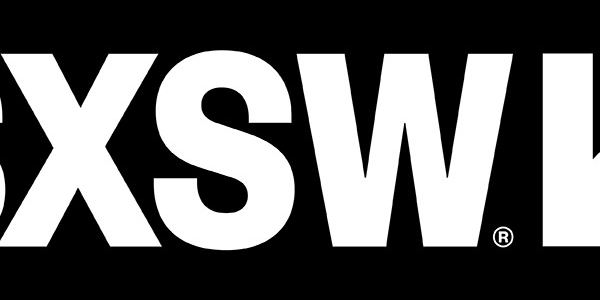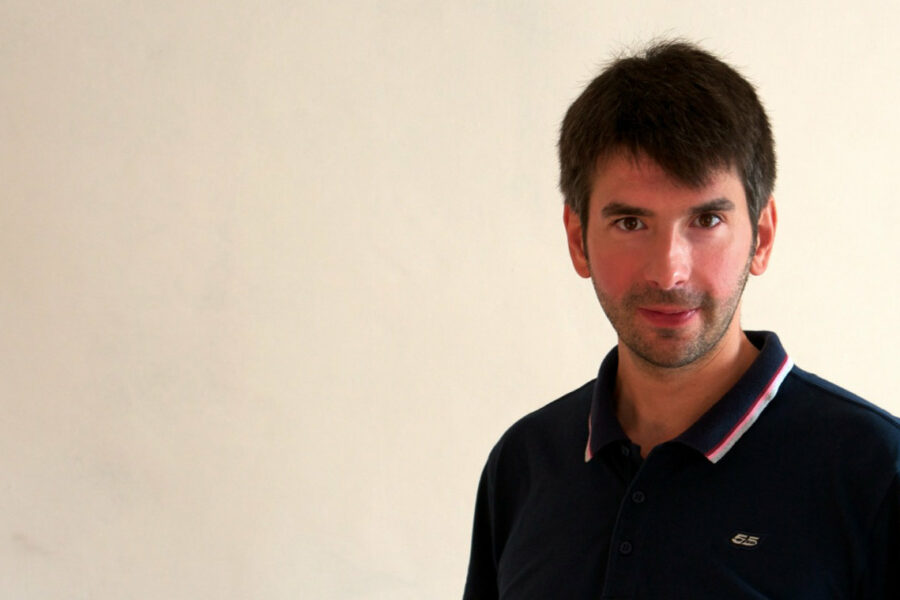Nick Pan works as the Director of Projects at Qais Consulting. As well as being addicted to aggressive inline skating, when not with his three daughters, he can also be found regularly blogging at nickpan.com. Follow Nick on Twitter
The Day Job
Tell me a little bit about the company you work for
There are about 30 talented people here at Qais Consulting, a full service interactive agency. I lead the Projects team that works closely with our other specialised teams namely Business, Creative, Technology, Media and Research.
What is the ratio of digital project managers to production staff at your company?
‘Qaisians’ (as we like to call ourselves) do a lot of thinking and strategising, so we do work with scalable resources when required. If we count them in as well (as Digital Project Managers still need to manage them) it’s around 1x project manager to every 4-6 production staff.
What online or offline tools do you tend to use for digital project management?
Google Spreadsheet is used heavily for resource planning and it’s currently the key tool. It’s in the cloud and easy to update, no need to fill in forms whatsoever. We go through a few spreadsheets with different teams during our weekly internal Monday morning WIP catch up.
Microsoft Excel is heavily used for GANTT Charts as its easier to share and edit as not everyone (including clients) have Microsoft Project. We do use MS Project for some clients who specifically ask us too.
Excel is also used for content inventory with Work Breakdown Structure (WBS) which doubles up as a sitemap. However, spreadsheets are never easy for clients to digest, hence just for clients’ easy consumption, MS Powerpoint is sometimes used for sitemaps.
For wireframes, our User Experience (UX) team usually use Axure, however for communication and briefing purposes, sometimes Digital Project Managers create high-level content zone type wireframes with MS Powerpoint, however, old school pencil and paper sketching is also used of course.
We don’t use any specific digital project management tools like Basecamp or Activecollab yet.
How on earth did you end up managing digital projects? Few people start out with this aim. Tell me how you wound up being a full-time punch bag?
Before I came into managing digital projects full-time, I was in the toilet business (yes, I’m not joking: sanseionline.com) and was doing websites on the side. The toilet thing was sort of a family business, but I really wanted to do web full-time, hence just sent out one application and told my potential employer that I’ll do anything and full-time punch bag I became.
No regrets though as a Digital Project Manager is at the heart of a project, you get to influence everything, from planning to execution and you manage clients and their budgets too.
Do you just manage digital projects or is your role varied? If so, what other roles do you perform?
I manage the project team and am usually involved with every single digital project in the company. There are definitely times when I fire up Paint.net, Filezilla and Notepad++ just to achieve quicker turn around times when it’s a really simple task and resources are all locked up.
I also do a lot of ‘solutioning’ at pre-sale stage. I simply love to be part of brainstorm sessions and come out with ideas for proposals then putting together pitch slides.
My job scope also encompass creating and tweaking processes to ensure things are done accurately and efficiently while achieving good profit margin. Mentoring the digital project team and improving their skill set is also something I’m doing more lately.
What type of digital projects do you typically work on?
Our company does all sorts of things, from large revamps to marketing campaigns and I usually get more involved in the large revamp digital projects or anything complex. For marketing campaign-type projects, I usually just work out the mechanics as digital can get quite complicated when multiple technologies are stacked together.
How many digital projects are you currently managing? What’s the most you’ve ever managed at any one time?
Currently I have a team of Digital Project Managers leading all the projects in the company and I’m only actively involved with about 3 of them while the rest of my attention is on proposals.
The most I’ve ever managed when I was a Digital Project Manager would be about 12. It’s more like 4 large web revamps with the rest being part of campaigns and website maintenance requests. The problem with marketing type projects is that there could be multiple sub-projects in one campaign and you have to manage multiple clients while at times being the awkward middleman when departments on your client’s side don’t talk to one another and provides you contradicting input.
I always think that being able to juggle multiple projects is a real skill, but no matter how good you are, the more digital projects you manage, it’s then about not letting any balls drop and that’s not good for the heart not to mention family and social life.
I always refer back to this video to remind my fellow Digital Project Managers that juggling too many balls is bad for health.
What percentage of a digital project’s total budgeted hours would you typically spend on project management?
For a typical project I think its around 20-25%. However for retainer projects the Digital Project Manager sometimes end up doing a lot of consulting rather then digital project management, so those go by the hour.
What digital projects are you working on right now, and what digital project are you most proud of to date?
Currently its Breeze by Standard Chartered Bank. Our involvement is online marketing of their new Breeze Banking platform which is available on the iPhone, iPad and online. I’m mostly involved in the website setup and also social media component.
The proudest would be the revamp of Yesterday.sg back in early 2009, not from a design perspective, but from a digital project management perspective. Other then the normal design revamp, it involved migrating 2700+ members, too many blog posts and about 1000 gallery photos from ExpressionEngine to WordPress. The beautiful part was it only had 1x designer, 1x programmer, 1x digital project executive and myself as the Digital Project Manager. It was all done under 2 months and was delivered a week early while the team clearly had other digital projects running in parallel – sorry, I can’t share profit margin here, but lets just say the boss was happy.
How would you describe your managerial style?
I found using Situational Leadership the most useful and have been using it ever since I learnt about it. It depends on the maturity level of the person or team you’re managing then applying the appropriate leadership style ranging from Telling, to Selling, Participating and Delegating.
I believe there is no one size fit all managerial style, so this works well with me especially in our industry where you have very passionate people, to people with attitude, and people who are fresh out of school and not sure if this is the industry they want to be in.
What are the common things that crop up on a daily basis that destroy your planned activities for that day?
I like solving problems, so when I see one I can’t help but poke my nose into it feeling I have an answer. Colleagues also regularly come to my desk and ask me questions which often end up in an hour of discussion, drawing diagrams to explain stuff on the whiteboard followed by another hour or two researching for possible alternatives online.
How do you keep organised personally, given the hectic life that comes with managing digital projects?
I use iGoogle as a dashboard and use Google Tasks to keep track of my to dos. I have extremely bad short-term memory, so this cloud solution allows me to access the list from all my mobile devices which rocks.
The Projects
At what point do you typically get involved with a digital project you are to manage? Pre-sales and estimating or only post-sale?
Right from pre-sales. I’m actively involved in proposals and get involve in the ‘ideation’, and ‘solutioining’. I also do most of the cost estimates and work out mechanics, especially the larger and more complex ones. Once we bag the digital project, I work with my Digital Project Managers on the initial planning part of the project and then let them manage the project from there on.
What technique do you use to estimate digital projects? Do you use different ones for small and large projects?
Different skill sets have different rates, so just take those rates and multiply by the amount of time needed to do a certain task and just total all of them up in MS Excel. There is also a base amount for specific common tasks like creative concept, wireframe design, HTML creation, banner creation, etc. The key thing is to have an efficient solution by costing an optimal number of deliverables the client needs.
Not all opportunities are worth the time, so you’ve got to know when to hold ’em and when to fold ’em.
How do you handle unrealistic digital project budgets and schedules?
The size of the budget is usually directly in relation to how important the digital project is. So if the budget is too low, it could show that the project is not important enough, so why bother. Just turn it down politely.
If the schedule is crazy, then I’ll get the client to advise what’s absolutely essential to go to market first and work out if it’s possible to have a phased approach for the rest. The more important thing would be to see if the web team even have bandwidth and the desire to take it up. If it’s unrealistic, like they need it by end of day for something that will clearly need more than a day, then just burst out laughing and ask “really?”.
Digital Project Managers are the first line of defence so at situations like these, we need to remind clients that we can’t cheat the law of physics no matter how much the budget.
How does your company approach scheduling all the work currently in the pipeline?
Digital projects have many interrelated tasks while resources are all shared in an agency, so it’s really not easy scheduling such volatile activities. What I found useful is using a simple Google spreadsheet booking system where it is in the Digital Project Manager’s favour to book the resource for the days that they need someone to get something done. Then if clashes appear, Digital Project Managers negotiate.
You receive a new digital project to manage, what are the first steps you’ll take?
Review the signed quote and its assumptions, develop a clear scope of work, share it with the team to ensure resources are available, do up a high-level realistic timeline, then have a kick off meeting with client to formalise the digital project and also to ensure expectations are aligned.
How do you tackle the art of monitoring digital project budgets versus progress?
We are primarily in a service industry, so going over budget usually means spending too much time. If 4 day efforts have been budgeted on a task, 3 days will be given for the actual task and 1 for the revisions. The whole back and forth on revisions can kill, so we put within the subject matter of emails ‘1st submission’, then we ensure the client provides all consolidated feedback before we do anything, then followed by ‘2nd submission’ et. – this simple clear communication helps a lot.
How do you manage the inevitable scope creep on digital projects?
If the request is simple and might take a few minutes, grumble a bit, then do it out of good will and score brownie points. If it’s bigger, then just say it’s out of scope and can be addressed in Phase 2 with a new cost estimate. Clients’ need to hear adding scope creep to the digital project will jeopardise the current progress, complicate matters and complicate deliverables and resources assigned. If the clients still make things difficult, just say I’ll check with the boss – from that point on it’s a business call for the business owner.
What advice would you give for managing difficult clients?
Every one wants to do their job well, even clients. So there could be reasons why they’re being difficult, so figuring out the root cause might help.
Some want to get promoted, so make them look like heroes. Some feel they know it all, so show you are taking in their inputs. Some are control freaks, so let them feel they are still in control. Some are lazy, so keep strictly to timelines and CC their bosses. Some are messy, so make things clear. Some have no life, so bring them out for drinks. Some don’t like your face, so get someone else to manage the project if you can, alternatively have less face to face meetings.
How do you ensure past mistakes on digital projects never happen again?
After problematic projects, do a post-mortem and get team members to share how the problems could be avoided. Document it, then share the experience with the rest of the company. Another simple way is to create checklists and constantly update them.
The Big Questions
What websites, blogs and podcasts are you currently using regularly for inspiration?
There are just too many. But my favourite for web design inspiration would have to be CSS Mania. It’s categorised by topic and listings are in nicely sized thumbnails of homepages which helps to quickly create a scrapbook by cut and paste. Search results returns thumbnails too, so if I want to search for golfing sites, http://cssmania.com/?s=golf returns nice golfing related thumbnails.
The other key websites would have to be Smashing Magazine, FWA, Note and Point, Banner Blog, Ads of the World and Pattern Tap.
Nowadays, everyone is sharing tons of useful inspiration links via Twitter, so I use Packrati to automatically add links within my favourite tweets to my Delicious bookmarks.
What are the biggest differences between managing website projects and web application projects?
For website projects, more time is spent on information architecture (IA) and design, but for web applications, task flows are key, so it’s also better to get something working first, then improve it along the way.
What, in your opinion, is the hardest part of digital project management?
10 years ago we talk about having a website with a contact us form, now it’s all about social media integration, APIs, etc. Nobody knows what the next big thing will be on the net, so Digital Project Managers must keep up. I’m not saying we need to learn every new thing that comes up, but we can’t manage things we don’t understand, so it’s important to know enough and to have time to do that on top of the already busy schedule.
In three words, how would you describe digital project management?
Multi-Faceted Leadership Gig
Thanks Nick, it sounds like when you were born your parents gave you a flipchart and marker pen set rather than toys :)
If you’d like to get involved in The Digital Project Manager Interviews then please leave a comment below or Tweet Me.







Leave a Comment